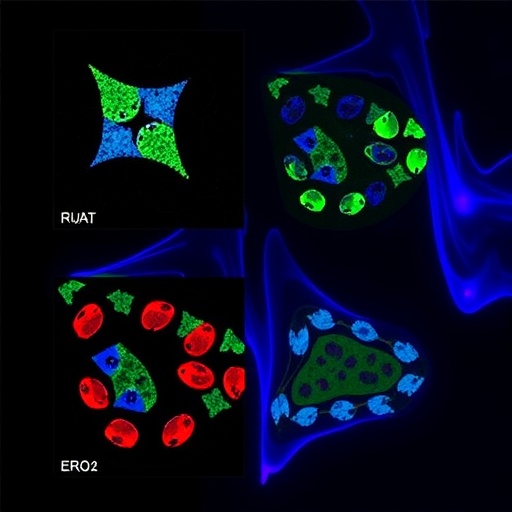Genomic study of 1980’s outbreak at a Wisconsin hospital may provide targets for better treatment of hospital-acquired infections
A new study led by a research team from Massachusetts Eye and Ear and Harvard Medical School describes how bacteria adapted to the modern hospital environment and repeatedly cause antibiotic-resistant bloodstream infections. Infections acquired by hospitalized patients are more often antibiotic-resistant than those that occur elsewhere, and hospitals invest considerable effort to prevent them. Despite best efforts, some bacteria are able to persist and circulate among patients, causing repeated infections. This study examined one of the first sustained hospital outbreaks of a multidrug-resistant bacterium, Enterococcus faecalis, which occurred from the early through the mid-1980s, causing over 60 outbreak strains.
The study, published online April 10 in Science Translational Medicine, was led by a research team headed by Michael Gilmore, PhD, Senior Scientist at Mass. Eye and Ear, and the Sir William Osler Professor of Ophthalmology, and Director of the Infectious Disease Institute in the Department of Ophthalmology at Harvard Medical School. The team compared the DNA sequences of bacteria that had been archived from the outbreak 30 years ago by collaborator Mark M. Huycke, MD, infectious disease specialist now at the University of Oklahoma Health Sciences Center. Spearheaded by Gilmore laboratory research associate Daria Van Tyne, PhD, and with the help of Broad Institute Scientist Ashlee Earl, PhD, the researchers identified mutations in the bacteria as they caused one infection after another over 4 years.
The study’s authors hope the novel findings on how enterococci infect the bloodstream will help scientists and physicians develop new ways to prevent these infections from happening, and to better treat them when they occur.
“Knowing how the microbes outsmarted the body’s immune system and antibiotics tells us what is critical to the microbe in order to cause infection,” says Dr. Gilmore. “This in turn gives us a clearer shot at new targets for developing the next generation of antibiotics, and for guiding their careful use inside and outside of hospitals.”
Naturally occurring in the human gut, enterococci bacteria can lead to infections including bloodstream and urinary tract infections, infections of surgical sites, and endocarditis–infection of the heart valves.
Researchers examined the genomes of the bacteria to analyze samples from an early outbreak of bacteremia in patients in a Wisconsin hospital between 1984 and 1988 that was caused by multidrug-resistant Enterococcus faecalis in order to learn how they adapted to existence in the hospital and transmission from one patient to another. By going back to the early days of the antibiotic resistance problem, Dr. Van Tyne, Dr. Gilmore, and colleagues were able to see that Enterococcus faecalis entering into the bloodstream first turn on an unusual pathway that allows the microbe to make a new substance that helps to shore up its cell wall. This makes the bacterium more able to resist being killed by white blood cells, and also by antibiotics of the penicillin class that attack the bacterial cell wall. The authors also saw that in the middle of the outbreak, the types of adaptations suddenly changed, and the bacteria began to reinforce their cell walls in a new way. This change corresponded to the introduction and widespread use of a then-new antibiotic, called imipenem.
Dr. Van Tyne, now an Assistant Professor in the University of Pittsburgh Department of Medicine, was able to repeatedly recreate the exact change 30 years later in the laboratory, using an imipenem class antibiotic, proving the link.
“Our study shows how an enterococcal outbreak lineage emerged and evolved over an extended hospital outbreak and how outbreak strains responded to host immune selection and changing antibiotic regimens,” says Dr. Van Tyne. “These findings highlight new pathways that could be further leveraged in the future for control and management of hospital-acquired enterococcal infections.”
Antibiotic resistant infection is a leading threat to public health worldwide. It has been estimated that by 2050, more people could die from infections that are no longer treatable with antibiotics, than from cancer. Understanding how some bacteria have been able to overcome our natural immune defenses, and new drugs as they are introduced, is the key to preventing a future where up to 10 million people could die each year from antibiotic resistant infection, according to Dr. Gilmore.
“This research study is a powerful example of how scientists like Dr. Gilmore are utilizing new genetic technologies and molecular biology to uncover new and important information about drug-resistant bacteria, so we may better understand, and ultimately prevent and treat life-threatening infections,” says Joan W. Miller, MD, the David Glendenning Cogan Professor and Chair of Ophthalmology at Harvard Medical School, Chief of Ophthalmology at Mass. Eye and Ear and Massachusetts General Hospital, and Ophthalmologist-in-Chief at Brigham and Women’s Hospital.
###
In addition to Dr. Gilmore and Dr. Van Tyne, co-authors on the Science Translational Medicine study include Abigail L. Manson, PhD and Ashlee M. Earl, PhD, of Broad Institute, Mark M. Huycke, MD, of Oklahoma Health Sciences Center, and John Karanicolas, PhD of Fox Chase Cancer Center. This study was supported by PHS grant nos. AI083214 (Harvard-wide Program on Antibiotic Resistance) and AI072360 to M.S.G. and grant no. EY028222 to D.V.T. Additional support for genome sequence analysis was provided by NIAID contract no. HHSN272200900018C and grant no. U19AI110818 to the Broad Institute. M.M.H. was supported by the Francis Duffy Endowment.
About Massachusetts Eye and Ear
Massachusetts Eye and Ear, founded in 1824, is an international center for treatment and research and a teaching hospital of Harvard Medical School. A member of Partners HealthCare, Mass. Eye and Ear specializes in ophthalmology (eye care) and otolaryngology-head and neck surgery (ear, nose and throat care). Mass. Eye and Ear clinicians provide care ranging from the routine to the very complex. Also home to the world’s largest community of hearing and vision researchers, Mass. Eye and Ear scientists are driven by a mission to discover the basic biology underlying conditions affecting the eyes, ears, nose, throat, head and neck and to develop new treatments and cures. In the 2018-2019 “Best Hospitals Survey,” U.S. News & World Report ranked Mass. Eye and Ear #4 in the nation for eye care and #6 for ear, nose and throat care. For more information about life-changing care and research at Mass. Eye and Ear, please visit our blog, Focus, and follow us on Instagram, Twitter and Facebook.
About Harvard Medical School Department of Ophthalmology
The Harvard Medical School Department of Ophthalmology (eye.hms.harvard.edu) is one of the leading and largest academic departments of ophthalmology in the nation. More than 400 full-time faculty and trainees work at eight Harvard Ophthalmology affiliate institutions, including Massachusetts Eye and Ear [home to Schepens Eye Research Institute], Massachusetts General Hospital, Brigham and Women’s Hospital, Boston Children’s Hospital, Beth Israel Deaconess Medical Center, Joslin Diabetes Center/Beetham Eye Institute, Veterans Affairs Boston Healthcare System, , and Cambridge Health Alliance. Formally established in 1871, the department has been built upon a strong and rich foundation in medical education, research, and clinical care. Through the years, faculty and alumni have profoundly influenced ophthalmic science, medicine, and literature–helping to transform the field of ophthalmology from a branch of surgery into an independent medical specialty at the forefront of science.
Media Contact
Ryan Jaslow
[email protected]
http://dx.




